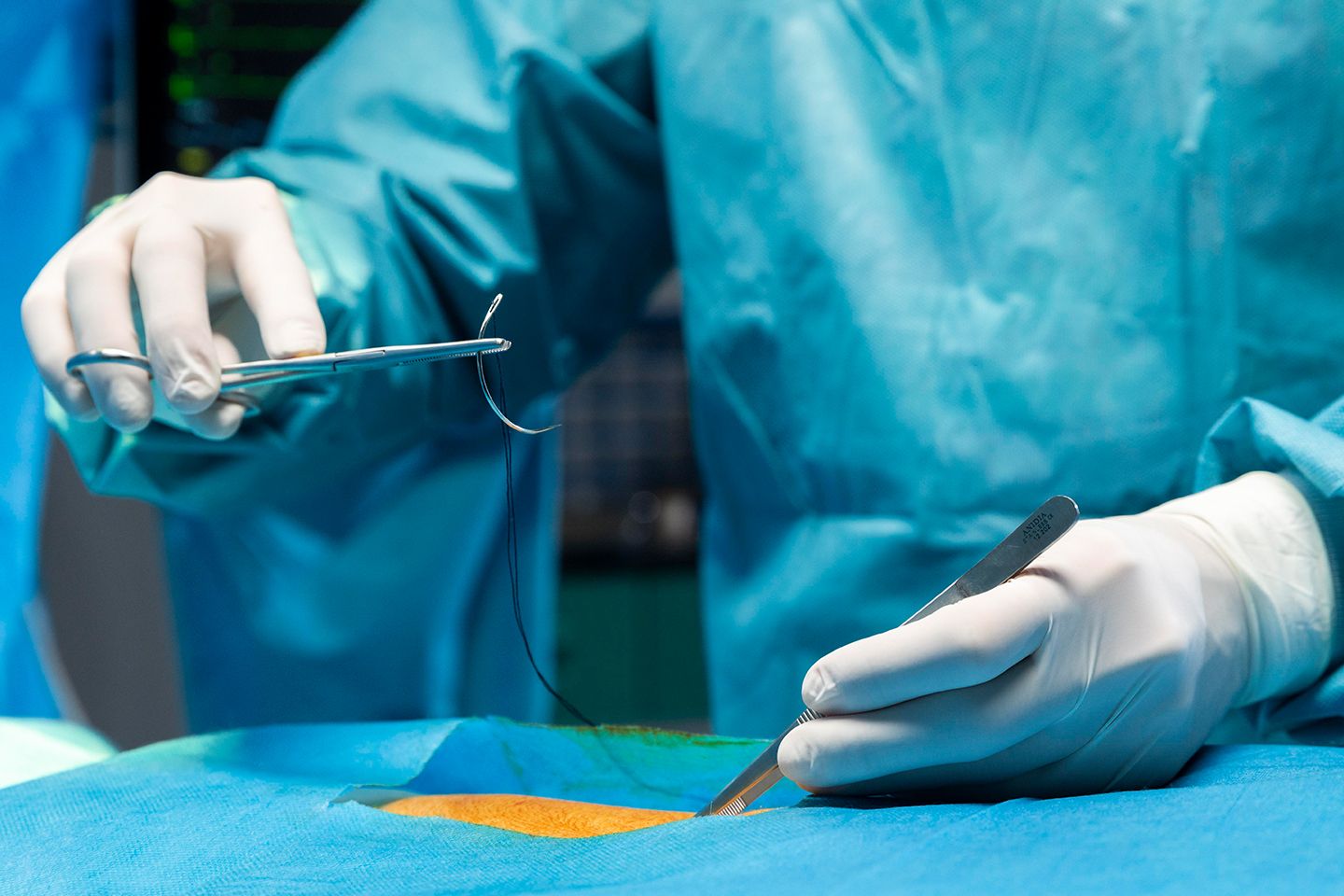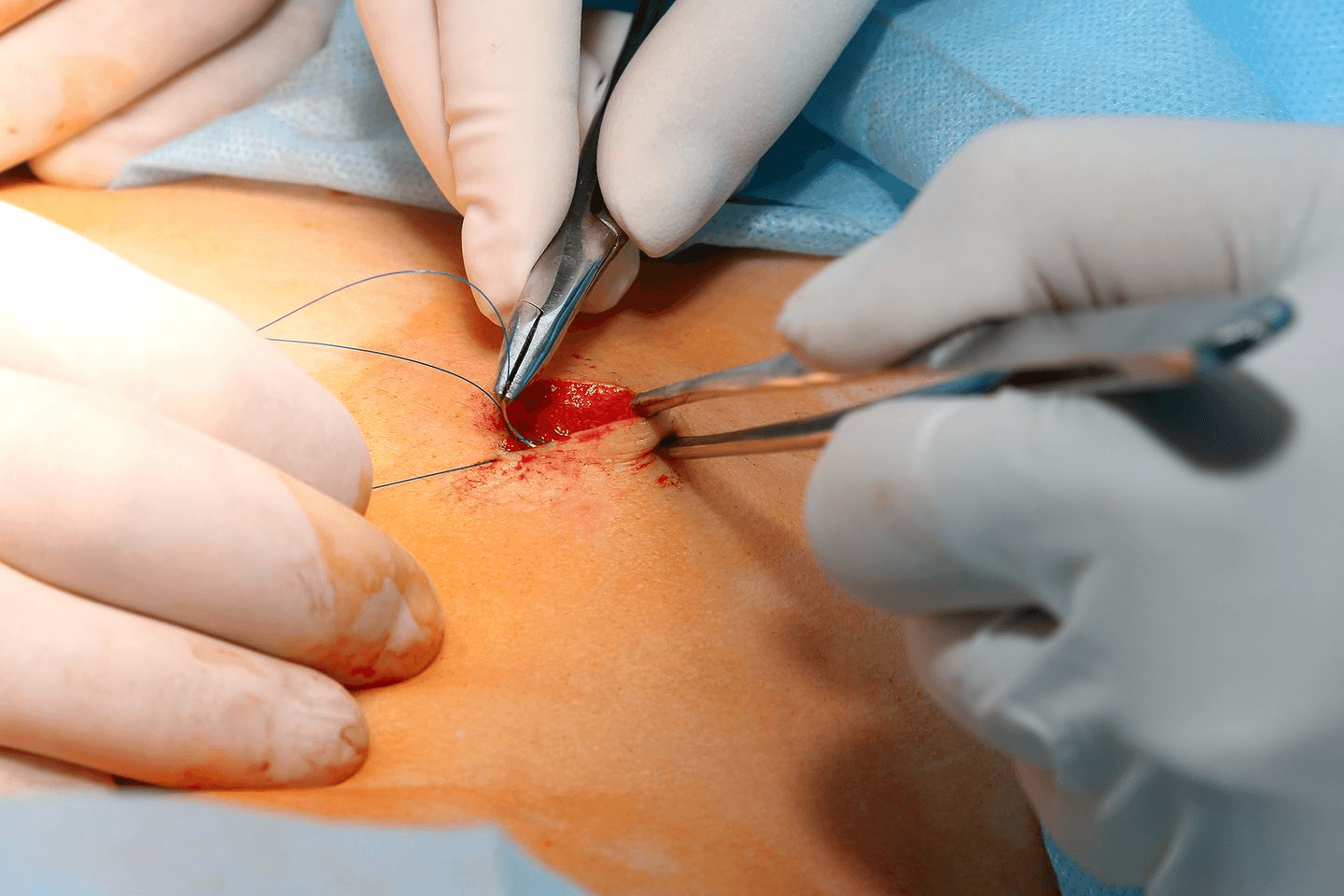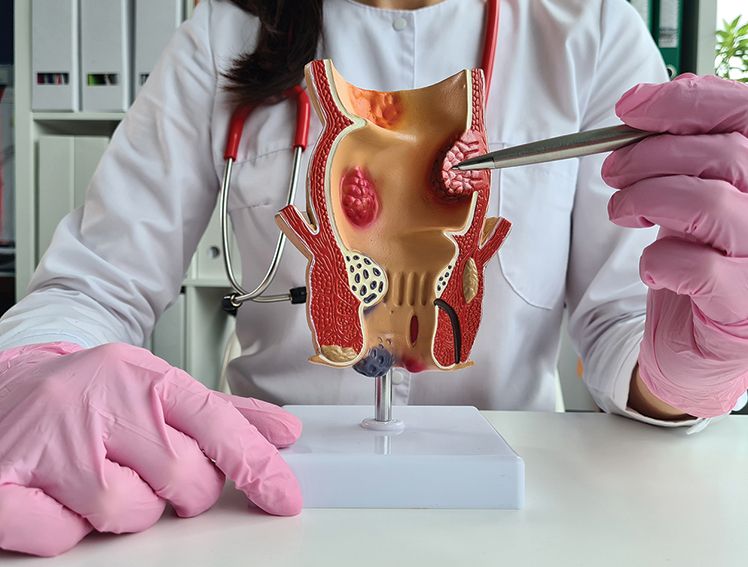
Different Types of non-absorbable Sutures
What are sutures?
Suturing is an essential part of a healthy recovery for surgery patients. They are medical devices that bring two soft tissues together and keep them in place until they join. Sutures are thread-like in texture and come in various shapes and sizes. There are primarily two types of sutures: absorbable and non-absorbable. As the name suggests, absorbable sutures get absorbed by the skin body, but the doctor must remove non-absorbable sutures.
What are non-absorbable sutures?
Non-absorbable sutures are made of materials that resist enzymatic digestion and must be removed by a doctor after the wound has healed. If left in place and not removed on time, it can lead to complications like excessive scarring, a high risk of infection, the formation of abscesses, or a stitch sinus.
Usually, non-absorbable sutures are used for fascia, tendons, abdominal wall surgeries, or vascular anastomosis. Some of the most used materials in non-absorbable sutures are silk, nylon, and Polypropylene.
What are the different types of non-absorbable sutures?
Non-absorbable sutures are primarily divided into two categories: natural and synthetic. Natural materials used as sutures are silk, linen, and cotton. The various types of non-absorbable synthetic sutures are polypropylene, polyester fibre, and polyamide sutures, to name a few. Stainless steel is a metallic non-absorbable suture.
- Silk sutures: Silk sutures have been in use across the world since the 1890s. The soft structure of silk makes it easy to handle for the surgeon; it has excellent knot-tying properties, and it usually does not cause any allergic reactions. Although they are termed non-absorbable, silk sutures tend to degrade in two years. Its tensile strength is also low, so the sutures are likely to break under high tension. Silk sutures are generally used for mucosal tissues or to close intertriginous areas. Hence, their best use is in dental surgery.
- Polyester sutures: Polyester sutures have better tensile strength than silk, and work great in the moist tissue ligation. They are useful in providing long-term wound support to the tissue, and are non-absorbable in nature. This suture material is widely used in the orthopedic surgeries, cardiac surgeries and nerve and tendon repair surgeries.
- Stainless steel wire sutures: Stainless steel wire sutures are used in orthopedic procedures, and Sternum closures. The most significant advantage is that stainless steel wire sutures are sterile, so there is no risk of infection. These soft and malleable sutures have optimum strength and flexibility and offer excellent knot security. The one disadvantage of stainless-steel wire sutures is that they are springy, making them difficult to work with.
- Polypropylene sutures: Polypropylene sutures are used when there is a need for long-term dermal support. They have a less severe tissue reaction and accommodate tissue swelling very well. The disadvantage of polypropylene sutures is that they are stiff and have a high memory, making their knot security poor. Surgeons normally need to perform thermocautery (destroy the tissue applying a heated needle) to fuse the knots.
- Polyethylene sutures: Polyethylene sutures are flexible, have a silky feel, soft on gloves and tissues, and are non-abrasive. Orthopedic and cardiovascular surgeons prefer them because of the tighter knot security provided during the tying process. The low knot profile allows for precise placement, a smooth tie-down, and superior knot break strength.
- Polyamide or Nylon sutures: These are the most used sutures in surgery. They are composed of a material known as caprolactam. They are generally used for soft tissue surgeries, namely cardiovascular, ophthalmic, and neurological. The material has high tensile strength but loses over six months if buried in tissue. The one disadvantage of polyamide sutures is that nylon is stiff, making handling and tying it difficult.
What is the difference between multifilament and monofilament suture?
Monofilament sutures are made of a single strand like nylon or prolene. Since they pass through tissue easily, there is less trauma and less chance of infection. They are usually used for open wounds or cosmetic surgeries. The disadvantage of monofilament is that it has poor knot security and low tensile strength.
Multifilament sutures are made up of several filaments twisted together to form a single strand. They come in two variants: twisted and braided. They are easier to handle and provide good knot security. The disadvantage of multifilament sutures is that they have capillary properties, meaning they can get absorbed by the cells being sutured. There is a higher risk of infection as microbial colonization can occur in the grooves. There is also tissue damage that can occur due to an increased friction coefficient as the multifilament suture passes through the tissue.
Meril Life Sciences offers different types of non-absorbable sutures, such as FILASILK™. It is a non-absorbable, braided, coated suture made from natural silk filaments. It provides good knot security and has excellent handling properties. It is generally used for skin closure, general soft tissues, abdominal tissues, and ophthalmic tissues.
Conclusion
There are various types of non-absorbable sutures available on the market. Depending on the type of wound and the part of the body or organ that requires surgery, the surgeons can decide which non-absorbable sutures suit their needs. They can choose from a variety of absorbable and non-absorbable sutures and monofilament or multifilament, depending on the wound.



